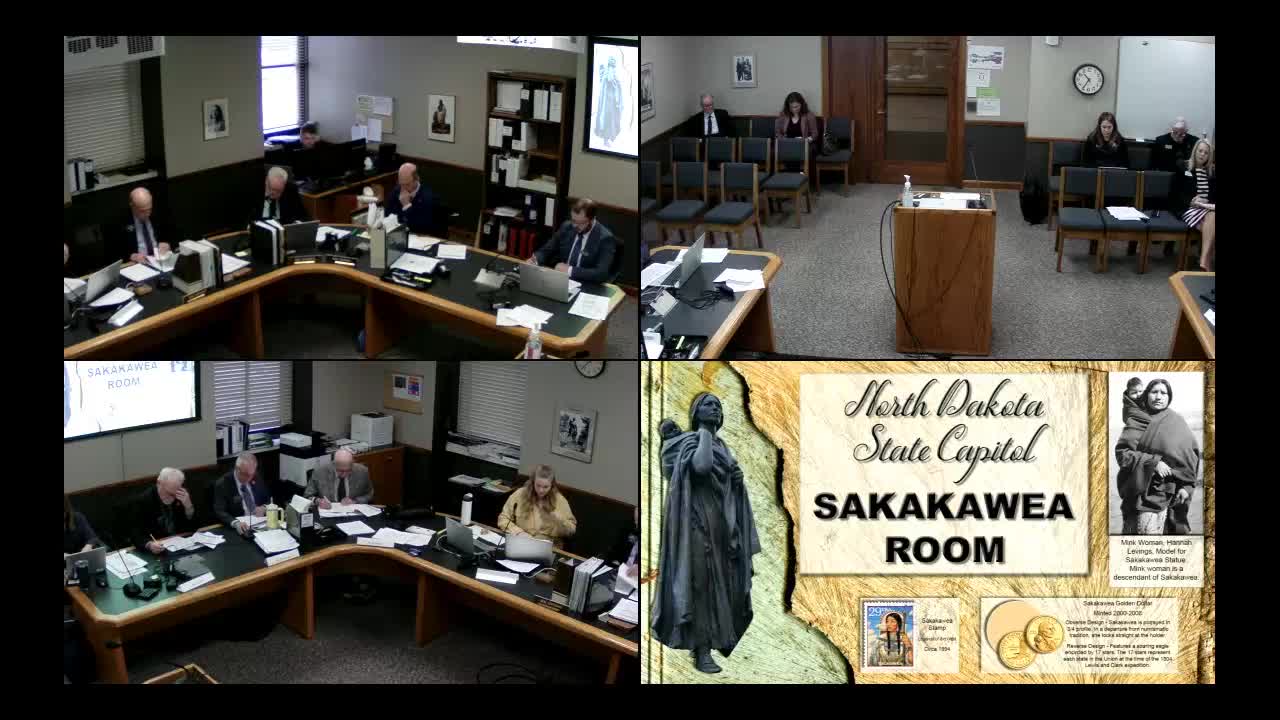Conference committee agrees to $8 million research fund, debates matching formula and innovation pool
April 26, 2025 | Senate, Legislative, North Dakota
This article was created by AI summarizing key points discussed. AI makes mistakes, so for full details and context, please refer to the video of the full meeting. Please report any errors so we can fix them. Report an error »

Chairman Sorvaugh said the conference committee would leave the research appropriation at $8,000,000 and asked members if they had objections, indicating he would mark the item done if there were none. "The distribution that 90% goes to UND and NDSU to share equally and the other 10% goes to the other 9 institutions," he said, describing the funding split included in the bill.
Why it matters: The committee’s decision preserves a multi-institution research allocation and sets the stage for debate over how higher-education capital and innovation dollars are matched and distributed across the university system.
The Senate presented a revised matching structure that would change the standard match rates: UND and NDSU would be placed on a 1-to-1 match, while the remaining institutions would receive a more favorable 2-to-1 (state-to-local) match. Sorvaugh described the intent as reducing the smaller institutions’ matching burden so they could complete projects without asking the Legislature for numerous individual earmarks. "We beefed this up, reduce their matching requirements so they're easier to do," he said, and framed the approach as a way to create a pot of money institutions could apply to rather than repeatedly seeking session-by-session earmarks.
The committee also discussed a $12,000,000 workforce innovation fund the Senate added, which Sorvaugh said was designed to operate as a competitive pot for startup and workforce-related projects rather than direct earmarks. He said UND and NDSU were intentionally excluded from participation in that fund in the Senate language, and that issue will remain under discussion. Representative Sanford asked whether a particular project — the Lake Region roof — would use the innovation fund mechanism; Sorvaugh said the fund would be the vehicle for that kind of need but acknowledged institutions still face difficulty raising their match.
Other items cleared by consensus included earlier sections the chair said he would mark "done" (sections the chair identified as agreed to in committee); the chair noted he would not reopen those sections in future meetings unless members raised them.
The committee did not fully settle on the revised matching approach; members agreed to continue discussion in later meetings and to focus upcoming sessions on the remaining contested portions of the bill.
Looking ahead: The committee plans to take up outstanding building and match issues in a later meeting focused specifically on capital projects and the mechanics of the revised matching framework.
Why it matters: The committee’s decision preserves a multi-institution research allocation and sets the stage for debate over how higher-education capital and innovation dollars are matched and distributed across the university system.
The Senate presented a revised matching structure that would change the standard match rates: UND and NDSU would be placed on a 1-to-1 match, while the remaining institutions would receive a more favorable 2-to-1 (state-to-local) match. Sorvaugh described the intent as reducing the smaller institutions’ matching burden so they could complete projects without asking the Legislature for numerous individual earmarks. "We beefed this up, reduce their matching requirements so they're easier to do," he said, and framed the approach as a way to create a pot of money institutions could apply to rather than repeatedly seeking session-by-session earmarks.
The committee also discussed a $12,000,000 workforce innovation fund the Senate added, which Sorvaugh said was designed to operate as a competitive pot for startup and workforce-related projects rather than direct earmarks. He said UND and NDSU were intentionally excluded from participation in that fund in the Senate language, and that issue will remain under discussion. Representative Sanford asked whether a particular project — the Lake Region roof — would use the innovation fund mechanism; Sorvaugh said the fund would be the vehicle for that kind of need but acknowledged institutions still face difficulty raising their match.
Other items cleared by consensus included earlier sections the chair said he would mark "done" (sections the chair identified as agreed to in committee); the chair noted he would not reopen those sections in future meetings unless members raised them.
The committee did not fully settle on the revised matching approach; members agreed to continue discussion in later meetings and to focus upcoming sessions on the remaining contested portions of the bill.
Looking ahead: The committee plans to take up outstanding building and match issues in a later meeting focused specifically on capital projects and the mechanics of the revised matching framework.
View full meeting
This article is based on a recent meeting—watch the full video and explore the complete transcript for deeper insights into the discussion.
View full meeting
